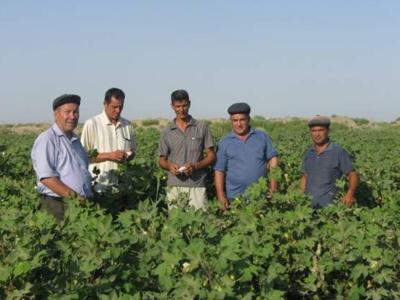Turkmenistan is located in the southern part of Central Asia between 35o08’ and 42o 48’ N and 52o 27’ and 66o 41’ E. It is approximately 488.1 thousand square kilometres. Its diverse natural conditions include three main types of landscape: deserts, oases and mountains. However, the majority of the territory is desert, the Karakum desert occupies approximately 80 per cent of the whole country, and has no rivers or surface water flows (World Bank, 2010). The country is richly endowed with hydrocarbons; its recoverable natural gas reserves rank fourth in the world. It also has substantial proven oil reserves and an extensive irrigation system for cotton and wheat, the country’s principal crops. There are also large potassium and salt deposits, many other minerals, iodine and bromide thermal waters. Its main exports include natural gas, oil and oil products, electricity and textile products.
Turkmenistan is vulnerable to climate change due to moisture deficiency. Droughts and higher temperatures are the two limiting factors for water development, agriculture and forestry. The rivers of the country are very important for irrigation; however, their uneven distribution over the country causes a shortage of water available for this purpose, especially in the south and west (Akmuradov, 2006; UNDP, 2009). Climate change is likely to reduce the volume of water available for irrigation and consequently limit the amount of crops produced. This is a threat to food security for the growing population in Turkmenistan. The people of Turkmenistan are also vulnerable to sharp rises in temperature which cause heat stress. It is a dry climate with minimal rainfall and a high percentage of solar days. Overall, Turkmenistan faces significant challenges in improving living standards by addressing poverty and current environmental stresses, including water availability. It is vulnerable to current climatic conditions due to frequent droughts and extreme weather conditions. As well, it has limited capacity to forecast weather and to manage and adapt to the climatic changes (Akmuradov, 2006). Furthermore, as agriculture accounts for about 22 per cent of Turkmenistan’s Gross Domestic Product and is a source of livelihood for more than half of the population, the consequences of climate change for this sector could significantly affect the development of the country and its people (UNDP, 2009).







